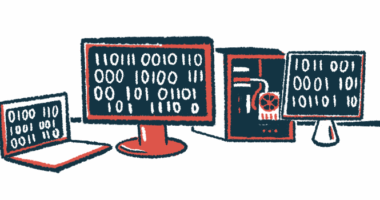How Thinking Differently Saves My Life

One and one always equals two, at least that’s how most people see it. Sometimes simple, concrete facts are comforting, especially for people diagnosed with progressive diseases, where we can’t trust our own abilities day-to-day. But I believe my ability to thrive depends on being able to see the world in a unique way, differently than how most people see it. Even though this made me distant and forlorn (i.e., weird) from my younger years to this day, those quirky thought patterns ultimately became key to my survival.
The symptoms of Friedreich’s ataxia cause me to remain uncertain of my abilities. Each day, I wake up hoping I can successfully climb out of bed without falling onto the floor. Although I transfer to my wheelchair successfully most of the time, a wave of doubt overtakes me as I hoist my body toward the seat of my wheelchair.
One and one may equal two, but I can’t be certain that Matt and transferring will be successful.
Every morning either begins with a little victory or with me toppling to the floor.
At times like these, a life of progression seems inseparable from a life of discouragement. If this is what I can always expect, shouldn’t anyone’s life with a progressive disease be hopeless and miserable?
The truth is I’m not miserable. Curiously, sometimes it’s not dependable, concrete thoughts, but rather my different, abstract ways of thinking that help me survive in a body whose abilities I can never totally depend on. I am trying to see that symptoms of progression are not merely signs of an early death, but new challenges in the battle against debilitation.
Thinking differently saves my life. I think doing so is key to thriving with a progressive health condition.
I am thankful for my ability to see things differently, which was evident from a young age, as I laughed when I watched a home movie of myself at 2 years old.
The home video was from Easter of 1988. My dad recently converted all of his video cassettes of my sisters and me during our younger years to DVD format. The homemade recording technology of the late 1980s showed me in a highchair, happy and talkative.
I don’t remember seeing this video before, just as I don’t remember much of my life from before I was diagnosed with Friedreich’s ataxia in my adolescence. So, I am grateful for and somewhat in awe of home videos like this one. On the TV screen, I saw myself being happy and silly, long before I had concerns about balance issues and slurring speech.
It was an odd and bittersweet feeling.
“How old is Scooter Bug?” my dad, much younger then, asked from behind the camera.
I didn’t know the answer. “You are one and one,” my mom prodded, off camera.
I pointed to one finger on my left hand, then one on my right. I brought my two hands next to each other and studied what I saw, deep in toddler thought.
Then, my eyes lit up and I knew the answer, clear as day.
Looking at the single finger held up on each of my two little hands, I shouted joyfully and confidently, “I’m eyeven!”
One and one equals 11, toddler Matt believed.
My dad chuckled loudly. “You’re right, but one and one can also be two.”
I finished watching 2-year-old me on the screen, laughing to myself. I felt myself slipping into cold, destructive nostalgia. I barely remember not having to worry about FA symptoms.
But instead of feeling depressed about my degenerating body, I decided to focus on gratitude for what I saw: my ability to think differently.
I shouldn’t read too much into this single scene from my life, but I think I recognize a quirky pattern of mine.
I think that during the progression of Friedreich’s ataxia, this ability is not only funny and quirky, but essential to my well-being. Some facts seem contradictory but are true. Sometimes vulnerability is strength. Sometimes tragedy makes joy more complete. Sometimes using a wheelchair is a sign of independence. Sometimes little victories are found in the most dire circumstances. And as I said in the home movie, sometimes one and one is 11.
***
Friedreich’s Ataxia News is strictly a news and information website about the disease. It does not provide medical advice, diagnosis or treatment. This content is not intended to be a substitute for professional medical advice, diagnosis, or treatment. Always seek the advice of your physician or another qualified health provider with any questions you may have regarding a medical condition. Never disregard professional medical advice or delay in seeking it because of something you have read on this website.The opinions expressed in this column are not those of Friedreich’s Ataxia News or its parent company, Bionews, and are intended to spark discussion about issues pertaining to Friedreich’s ataxia.







Leave a comment
Fill in the required fields to post. Your email address will not be published.